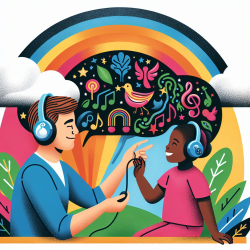Understanding the Vector Model of Complexity
The concept of patient complexity is evolving in clinical medicine, and the Vector Model of Complexity offers a novel framework for understanding the multifaceted nature of patient care. This model, as detailed in the research article "Patient Complexity: More Than Comorbidity. The Vector Model of Complexity," highlights the interplay between biological, socioeconomic, cultural, environmental, and behavioral factors as determinants of health. These factors, though often overlooked, significantly impact the processes and outcomes of care, especially for chronic conditions.
Implications for Child Therapy
For practitioners in speech language pathology and child therapy, understanding and implementing the Vector Model can lead to improved outcomes. The model emphasizes the importance of achieving congruence between the patient, the provider, and the healthcare system. This congruence is crucial for developing effective, patient-centered treatment plans. By assessing all axes of the Vector Model, practitioners can tailor their approaches to meet the unique needs of each child, considering not just their biological conditions but also their cultural, socioeconomic, and environmental contexts.
Practical Steps for Practitioners
- Holistic Assessment: Evaluate each child’s complexity across all axes of the Vector Model, not just their biological or speech-related issues.
- Tailored Interventions: Develop treatment plans that consider the child's entire context, including family dynamics, cultural background, and environmental influences.
- Evidence-Based Adjustments: Use evidence-based guidelines to inform trade-off decisions, ensuring that interventions are both effective and feasible for the child’s specific situation.
- Continuous Learning: Stay informed about interdisciplinary research that explores the multiple sources of patient complexity and their interactions.
Encouraging Further Research
The Vector Model of Complexity underscores the need for expanded research to inform the care of complex patients, particularly in making clinical trade-off decisions. Practitioners are encouraged to engage with ongoing research efforts and contribute to the development of new evidence-based guidelines that incorporate patient complexity into quality measurement and performance profiling.
Conclusion
By adopting the Vector Model of Complexity, speech language pathologists and child therapists can enhance their practice, leading to better outcomes for children. This model provides a comprehensive framework for understanding and addressing the diverse factors that contribute to patient complexity. As practitioners, embracing this model means committing to a more holistic, patient-centered approach to care.
To read the original research paper, please follow this link: Patient Complexity: More Than Comorbidity. The Vector Model of Complexity.










